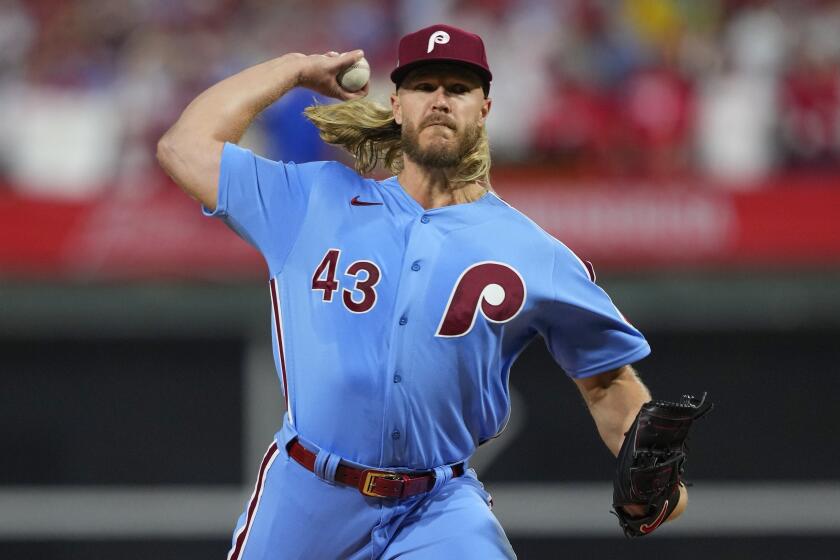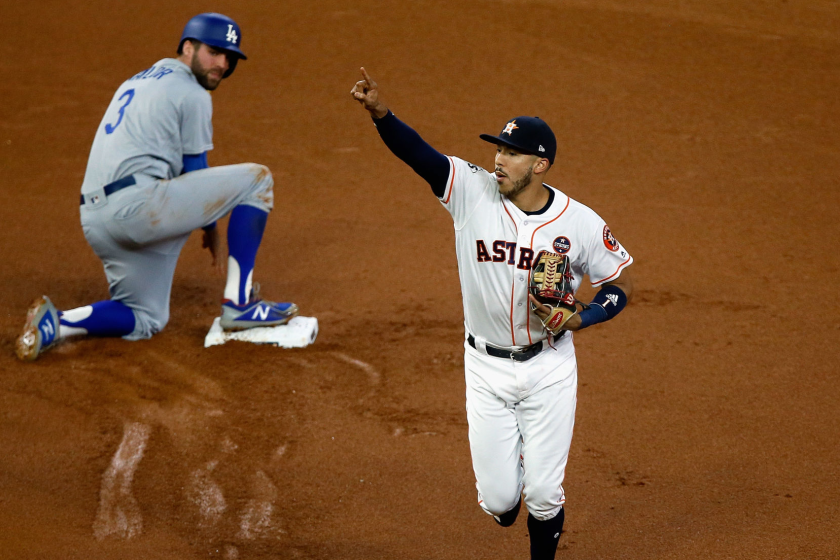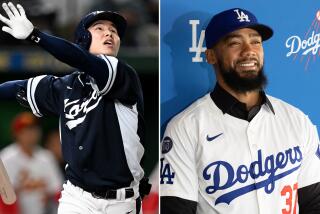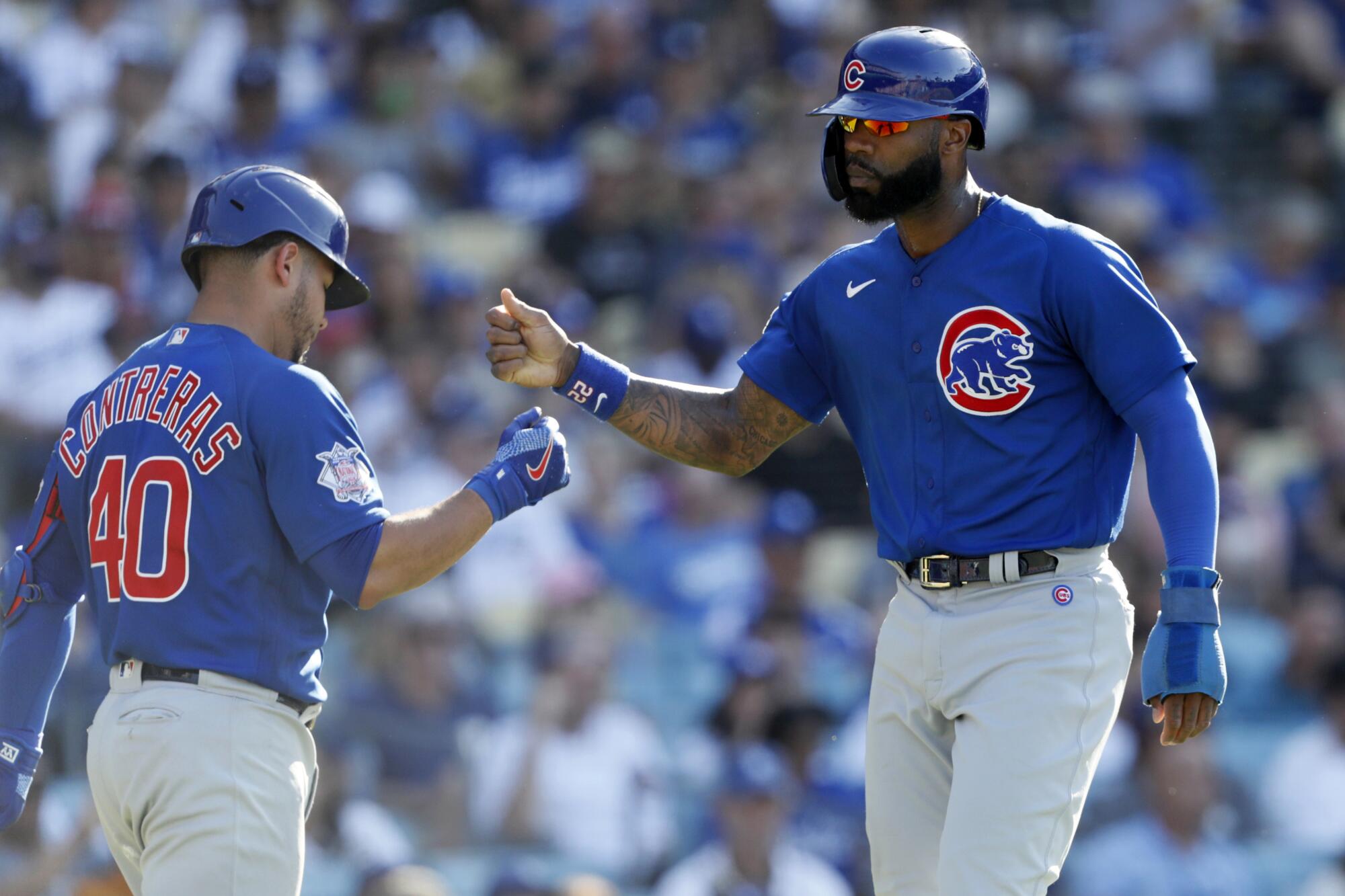
- Share via
As it became clear last year that his time with the Chicago Cubs was drawing to a close, and that an uncertain offseason would soon be thrust upon him, Jason Heyward braced for the possibility of life after baseball.
The 33-year-old outfielder didn’t want his career to end. After 13 major league seasons, one All-Star selection and five Gold Glove awards, he didn’t think his tank had run empty. He still believed he could influence a contending team.
“I know I can still play,” he told himself. “I know I still want to do it.”
What Heyward didn’t know was whether any of Major League Baseball’s 30 franchises felt the same way.
After having one of his best seasons during the pandemic-shortened 2020 campaign to help the Cubs win the National League Central, Heyward’s performance had cratered the last two years.
He struggled at the plate, slumping to a combined .211 batting average between 2021 and 2022. He landed on the injured list repeatedly, battling everything from a hamstring strain to a concussion to a right knee problem that ended his 2022 season in late June.
By August, the Cubs had decided they would release Heyward this winter, even though they are still obliged to pay him $22 million in the final season of his contract.
The Dodgers reached an agreement with free-agent pitcher Noah Syndergaard on a one-year contract on Wednesday.
And while Heyward remained optimistic he would find a new home, he also contemplated the potential of a forced early retirement.
“If no team was going to say they wanted to have me, that was a reality that I had to be prepared for,” Heyward said. “That was an unknown.”
Relief, however, came quickly during free agency.
Shortly after Heyward was officially released on Nov. 14, several teams reached out to his camp, intrigued by the possibility of adding the veteran on a league-minimum salary.
None made as strong of a push as the Dodgers, who called his agent three days in a row before eventually signing him last week to a minor league contract with an invitation to big league spring training.
It was a far different result than Heyward’s last foray into free agency in 2016, when he landed his eight-year, $184-million deal as one of that offseason’s most coveted targets.
But given the crossroads he was facing this time, he viewed an opportunity with the Dodgers as a chance for a much-needed reboot, the perfect place to potentially revitalize his career.
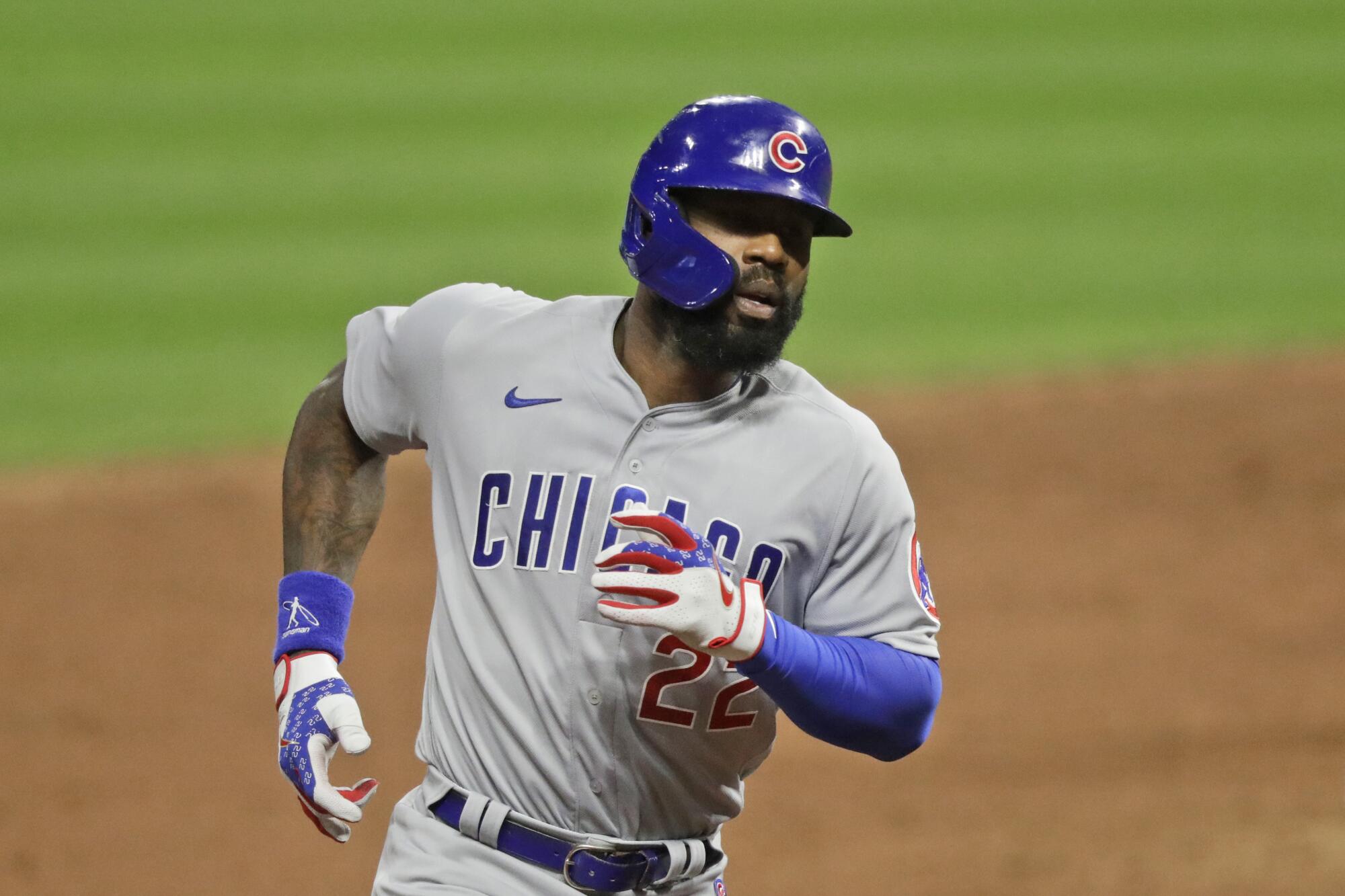
“They have a reputation for doing things in a special way, getting the most out of everyone involved,” Heyward said by phone this week in his first interview since signing with the team. “For them to reach out to me, and want me to have an opportunity to be part of that process, that made it that much easier.”
Heyward is under no illusions about his new situation.
He knows he’s not a lock to make the major league roster (though the Dodgers could certainly use his left-handed bat and defensive versatility in the outfield, where it’s still unclear who they will use to replace Cody Bellinger in center).
Heyward reiterated several times that his only focus right now is on maximizing his offseason program, hopeful of making improvements in his swing by the time he arrives at spring training in February.
“I want to be the best version of myself,” he said. “And the Dodgers, I feel like, give me a really, really great opportunity to do that.”
Heyward said that during his initial Zoom meetings with the team, club brass identified his bat speed and natural athleticism as tools they liked; building blocks they believe could make Heyward a contributor at the major league level.
Their work together began this past week, as Heyward flew to Los Angeles to work out at Dodger Stadium alongside the club’s hitting coaches, Robert Van Scoyoc and Aaron Bates, and strength staff.
“I want to be the best version of myself. And the Dodgers, I feel like, give me a really, really great opportunity to do that.”
— Dodgers outfielder Jason Heyward
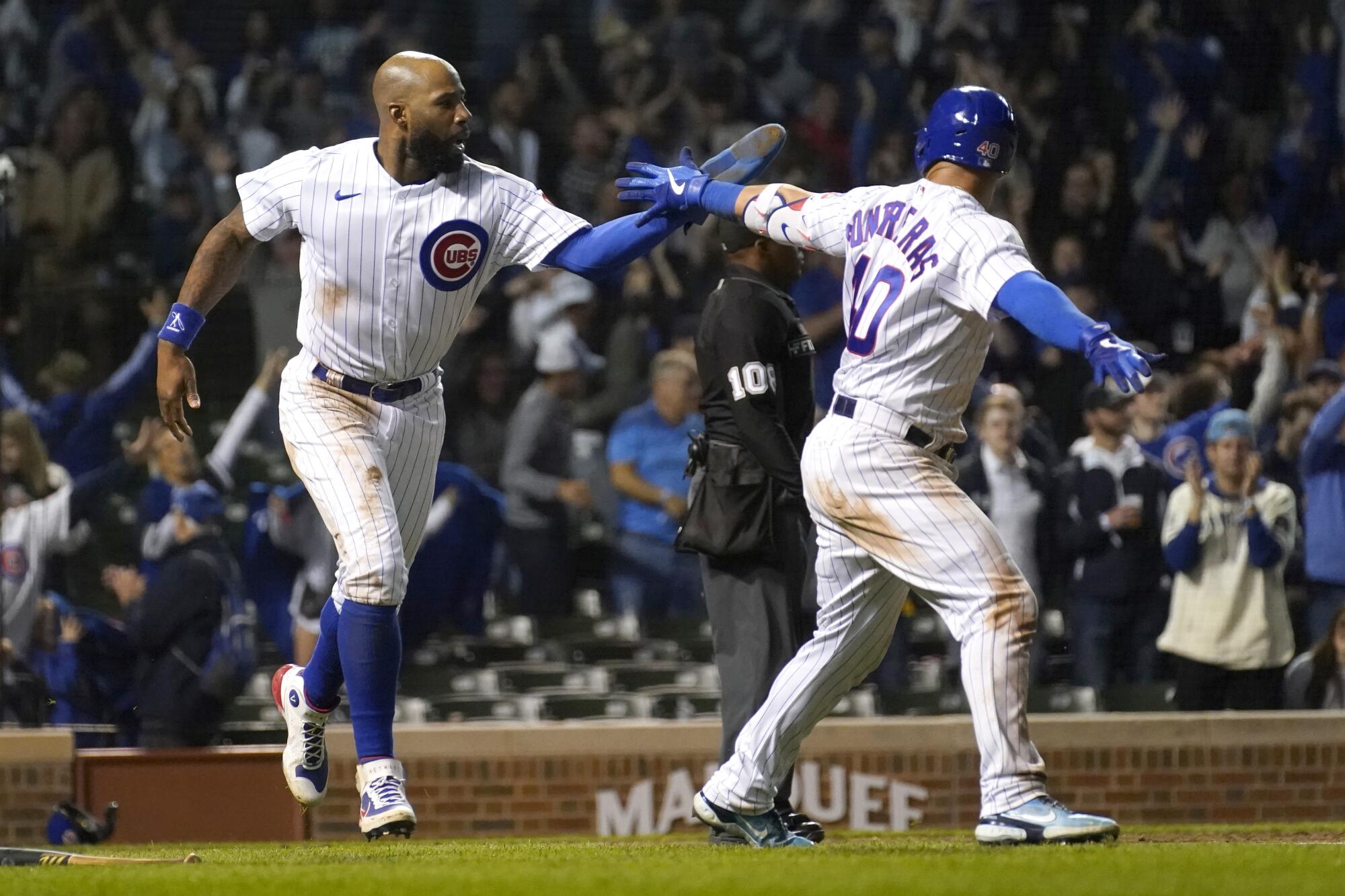
“It almost feels like a walk-through before spring training,” Heyward said. “I’m gonna spend more time with them the rest of the offseason.”
The other asset the Dodgers are hoping Heyward can provide: additional veteran presence on a team undergoing a roster transition this offseason.
In Chicago, Heyward’s leadership was renowned. In the 2016 World Series, a speech he gave during a Game 7 rain delay became something of club lore. And even as his role diminished in recent seasons, his guidance of the Cubs’ younger core received wide praise around the organization.
Still, Heyward acknowledged his final days there weren’t always easy.
As the front office traded away long-time teammates and entered an obvious rebuild, Heyward grappled with the realities of playing on a losing team for the first time in his career.
As if Carlos Correa’s ties to the Astros cheating scandal weren’t enough, signing with the Giants gave Dodgers fans another reason to loathe him.
And once it became clear he wouldn’t be retained in 2023, Heyward spent much of the second half of last season working out away from the team at his home, worried his situation could become a distraction if he remained around the clubhouse full time.
“What I didn’t want was to be a shadow that hangs over a team, where my situation is coming up every day and guys are getting asked about it,” Heyward said. “I didn’t want that to be part of some guys’ first big league experience, because they had a lot of new guys coming through. It was already weird enough … I wanted to respect that space.”
It made Heyward’s signing with the Dodgers a breath of fresh air.
He’s back with a contending team. He has a chance to prolong his career. And after months of uncertainty, he knows he won’t have to worry about life after baseball for at least one more winter.
“I want to be here for opening day, and helping this team win,” he said. “So [I’ve] just been putting my best foot forward, not wasting the opportunity.”
More to Read
Are you a true-blue fan?
Get our Dodgers Dugout newsletter for insights, news and much more.
You may occasionally receive promotional content from the Los Angeles Times.

